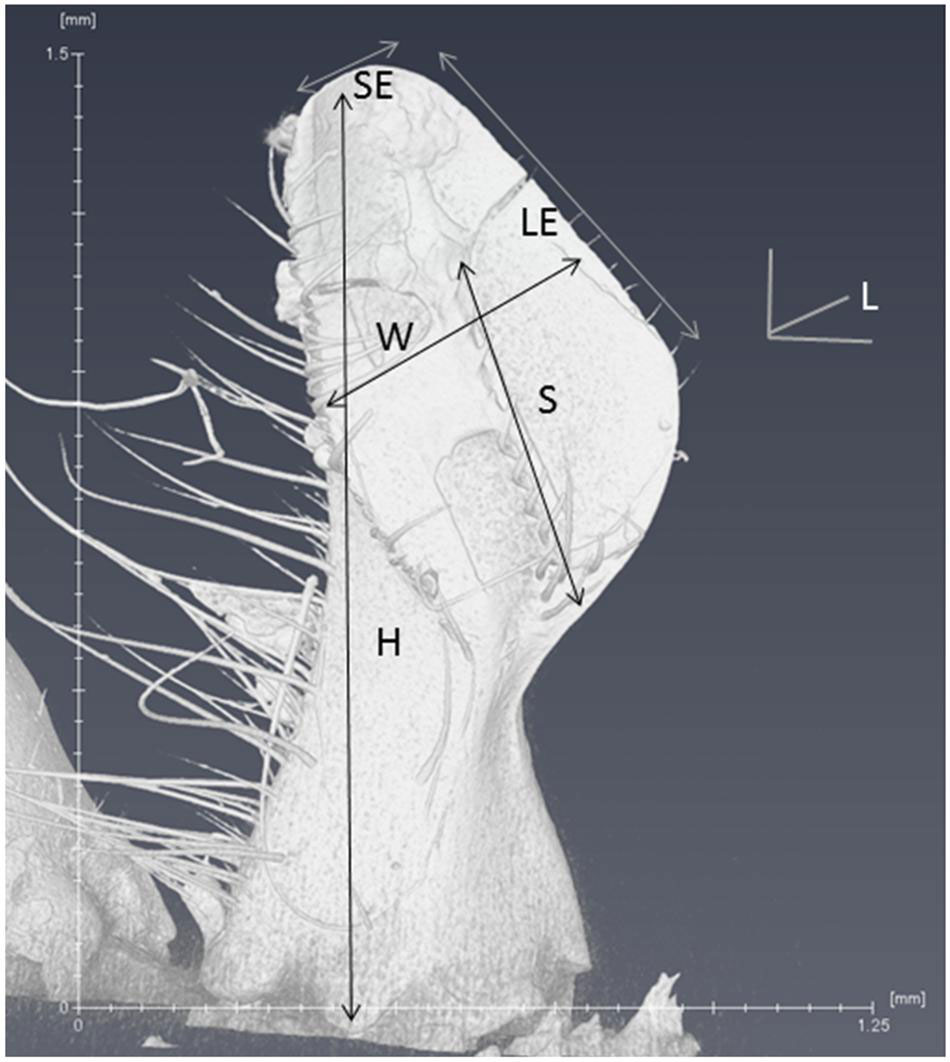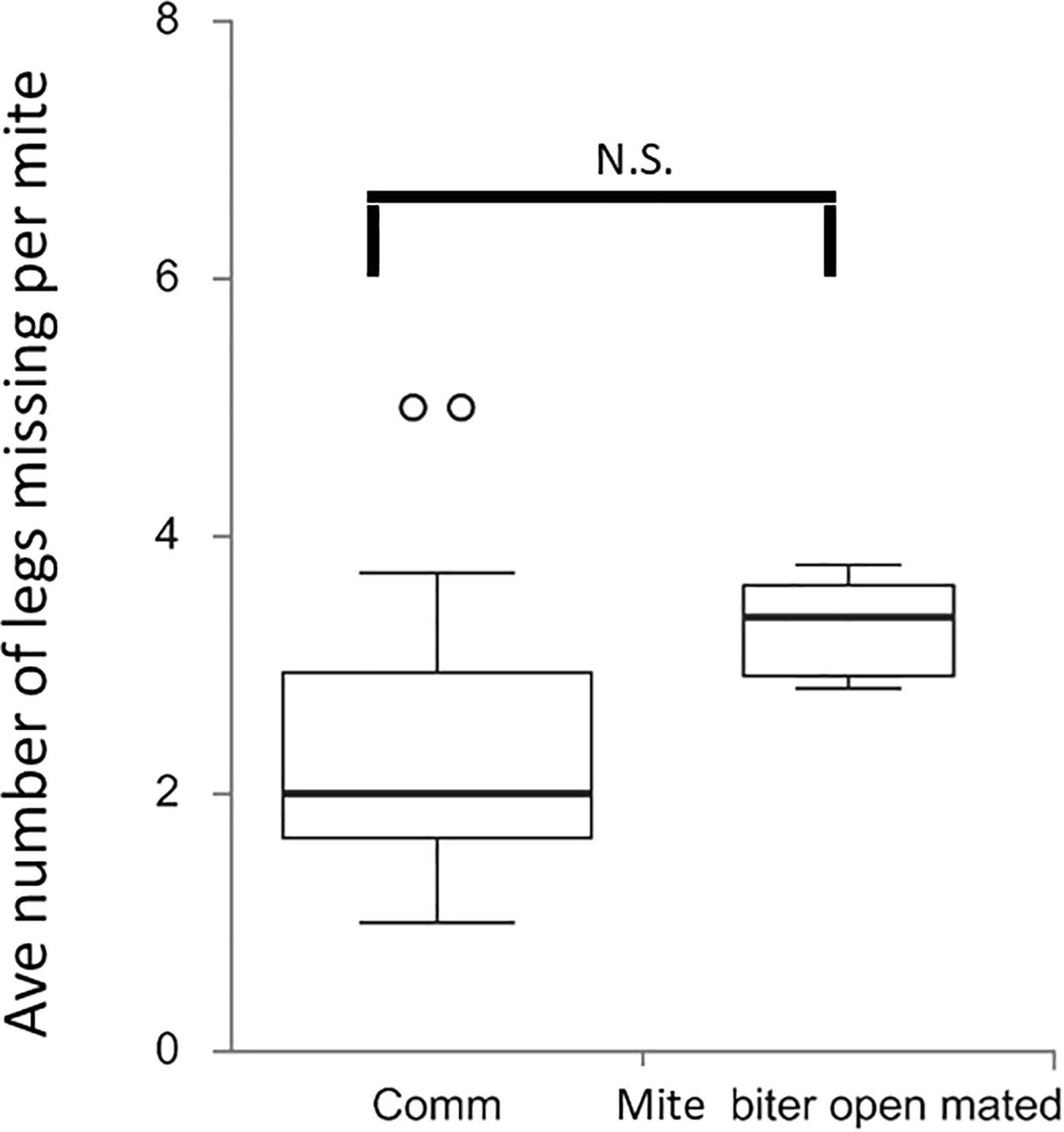
95% of researchers rate our articles as excellent or good
Learn more about the work of our research integrity team to safeguard the quality of each article we publish.
Find out more
CORRECTION article
Front. Ecol. Evol. , 29 January 2024
Sec. Behavioral and Evolutionary Ecology
Volume 12 - 2024 | https://doi.org/10.3389/fevo.2024.1363147
This article is a correction to:
Morphological Changes in the Mandibles Accompany the Defensive Behavior of Indiana Mite Biting Honey Bees Against Varroa Destructor
A Corrigendum on
Morphological changes in the mandibles accompany the defensive behavior of Indiana mite biting honey bees against Varroa destructor
by Smith J, Cleare XL, Given K and Li-Byarlay H (2021) Front. Ecol. Evol. 9:638308. doi: .10.3389/fevo.2021.638308
In the published article, there was an error in the legends for Figures 5, 6 as published. The correct legends appear below.

Figure 5 Six parameters of the scanned mandible are listed on the microCT image. L, length; W, width; H, height; SE, short edge; LE, long edge; S, span of the spine area.

Figure 6 Box plots of the average number of legs missing per mite per colony among two groups, commercial colonies (Comm, Ncolony = 15) and open-mated mite-biter colonies (open-mated mite biter, Ncolony = 7). The open circles indicate outliers. The results showed no difference in the average number of legs missing per mite between the two groups, Q = 2.43, p > 0.05.
The authors apologize for this error and state that this does not change the scientific conclusions of the article in any way. The original article has been updated.
All claims expressed in this article are solely those of the authors and do not necessarily represent those of their affiliated organizations, or those of the publisher, the editors and the reviewers. Any product that may be evaluated in this article, or claim that may be made by its manufacturer, is not guaranteed or endorsed by the publisher.
Keywords: honey bee, Apis mellifera, defensive behavior, Varroa resistance, bite, grooming, mandible, microCT
Citation: Smith J, Cleare XL, Given K and Li-Byarlay H (2024) Corrigendum: Morphological changes in the mandibles accompany the defensive behavior of Indiana mite biting honey bees against Varroa destructor. Front. Ecol. Evol. 12:1363147. doi: 10.3389/fevo.2024.1363147
Received: 29 December 2023; Accepted: 16 January 2024;
Published: 29 January 2024.
Approved by:
Frontiers Editorial Office, Frontiers Media SA, SwitzerlandCopyright © 2024 Smith, Cleare, Given and Li-Byarlay. This is an open-access article distributed under the terms of the Creative Commons Attribution License (CC BY). The use, distribution or reproduction in other forums is permitted, provided the original author(s) and the copyright owner(s) are credited and that the original publication in this journal is cited, in accordance with accepted academic practice. No use, distribution or reproduction is permitted which does not comply with these terms.
*Correspondence: Hongmei Li-Byarlay, aGxpLWJ5YXJsYXlAY2VudHJhbHN0YXRlLmVkdQ==
Disclaimer: All claims expressed in this article are solely those of the authors and do not necessarily represent those of their affiliated organizations, or those of the publisher, the editors and the reviewers. Any product that may be evaluated in this article or claim that may be made by its manufacturer is not guaranteed or endorsed by the publisher.
Research integrity at Frontiers

Learn more about the work of our research integrity team to safeguard the quality of each article we publish.